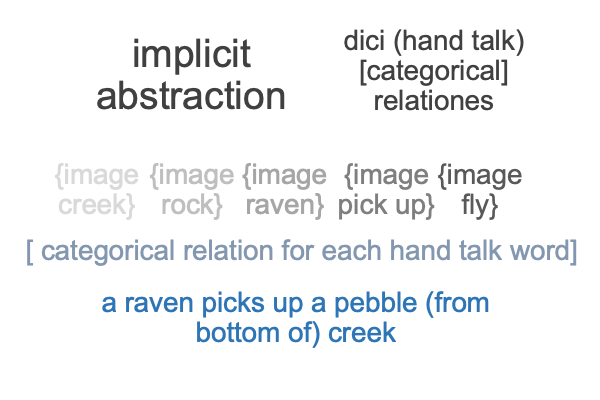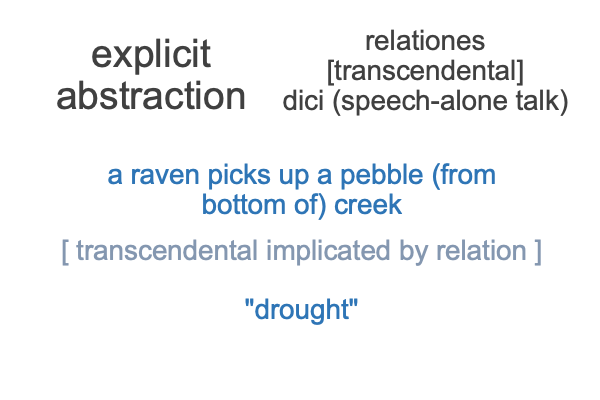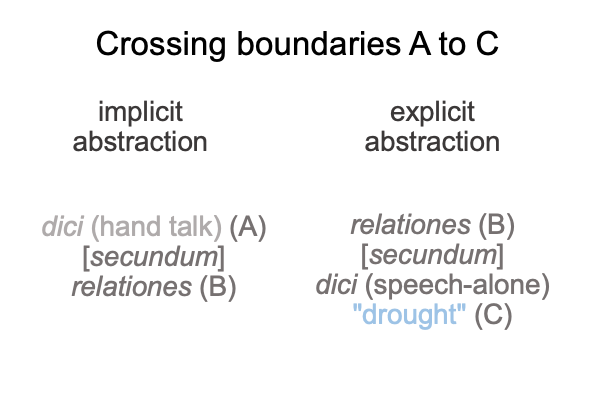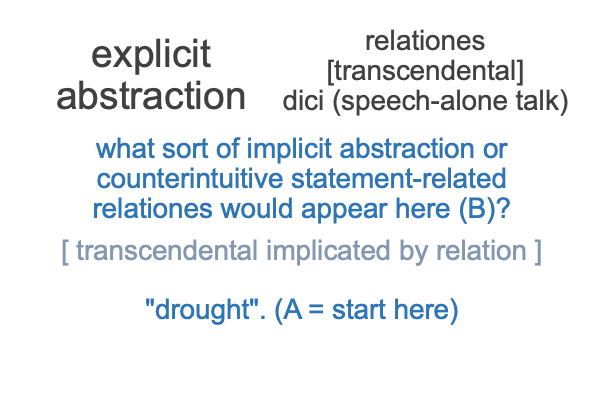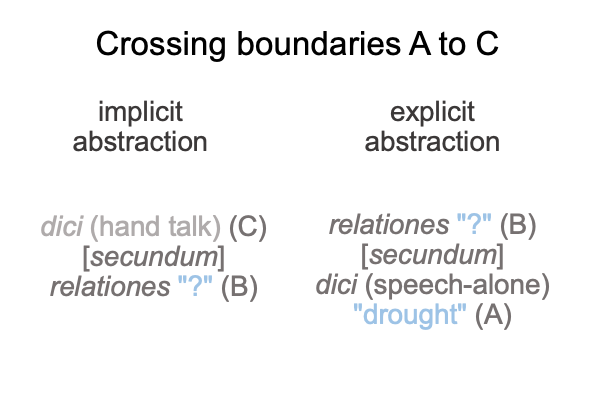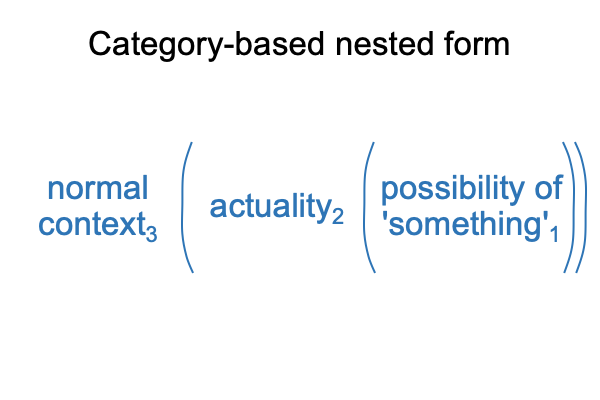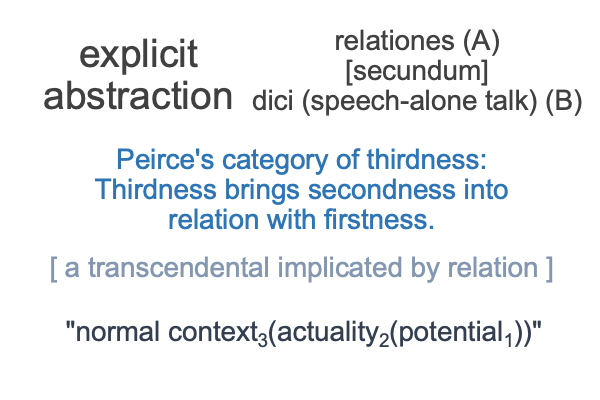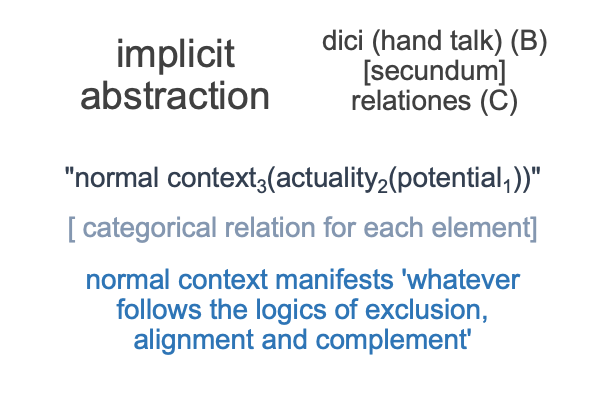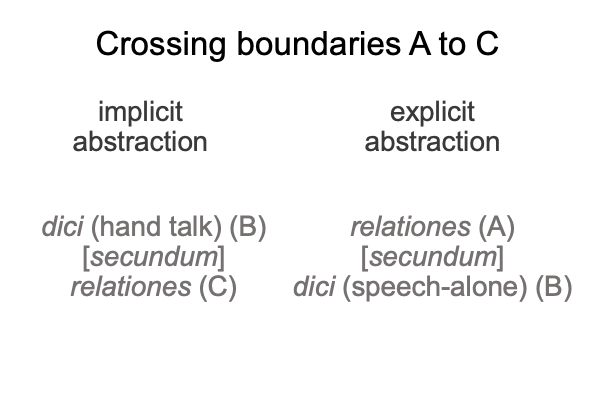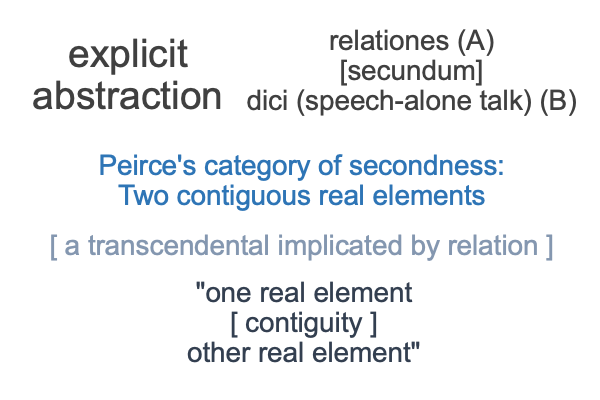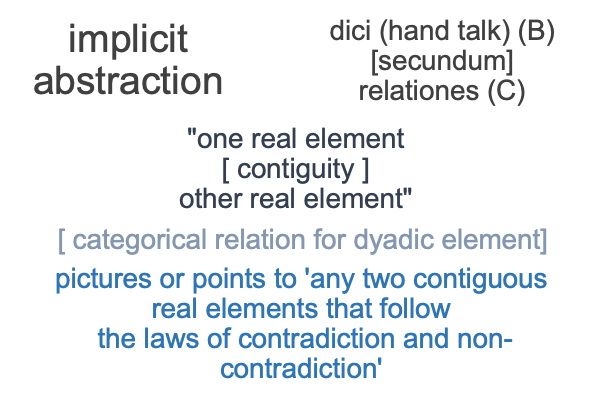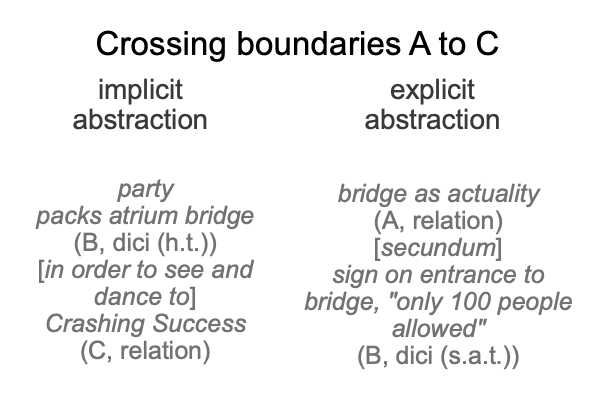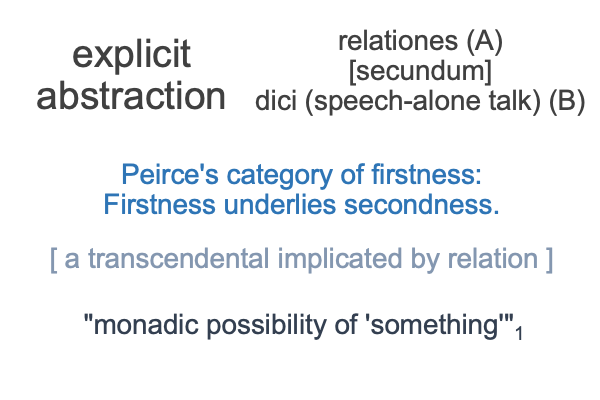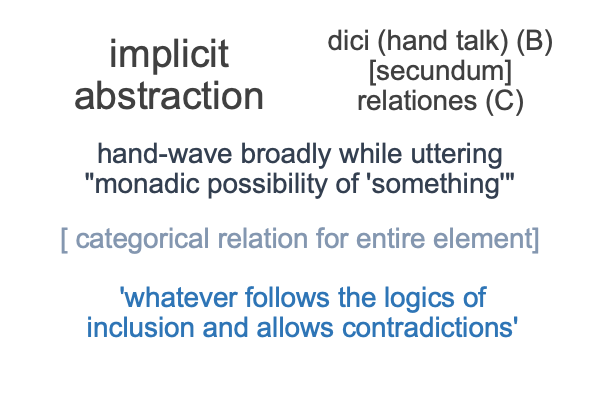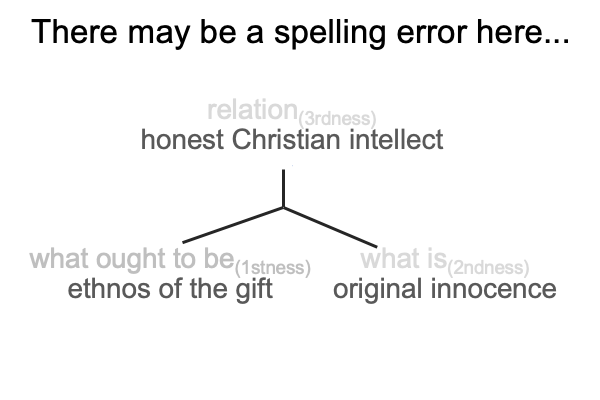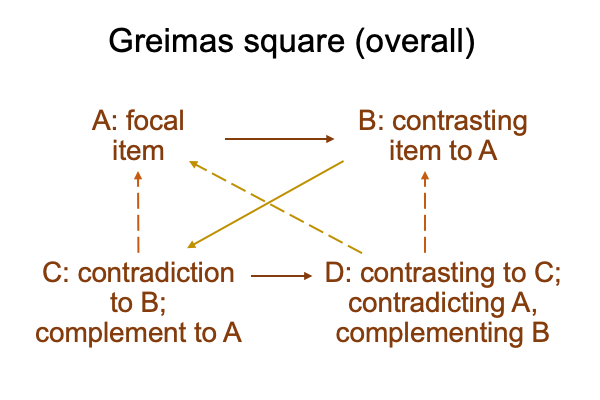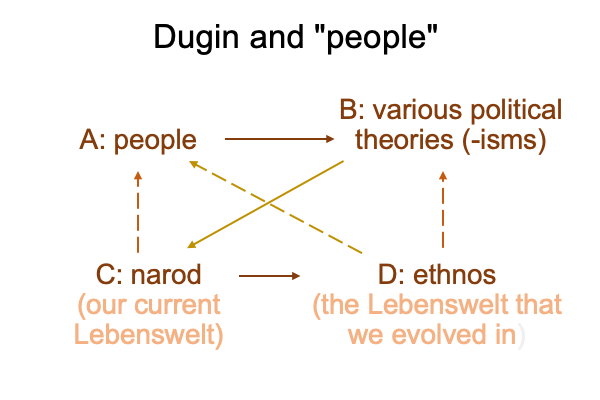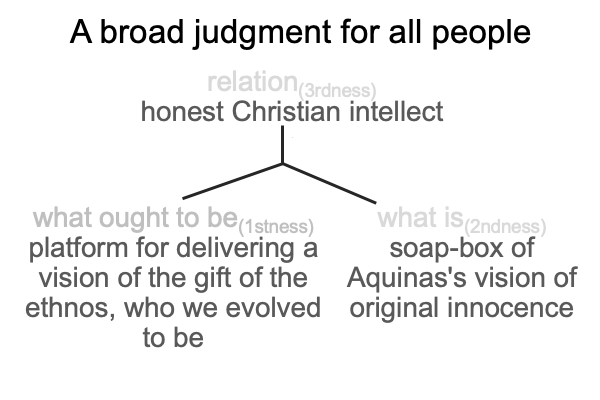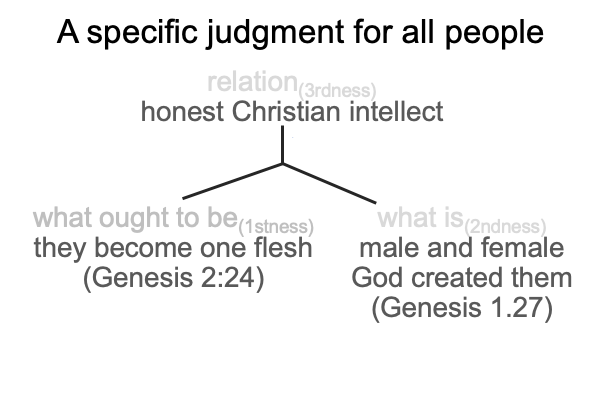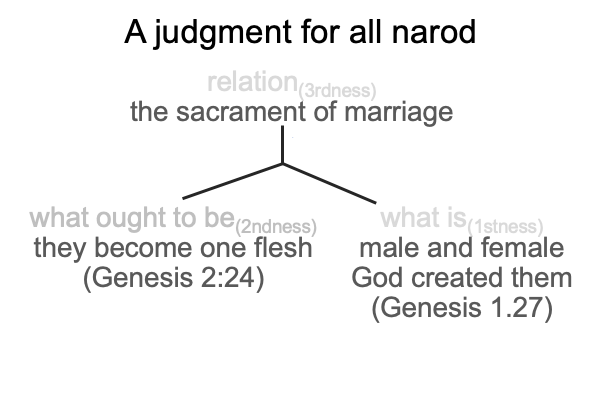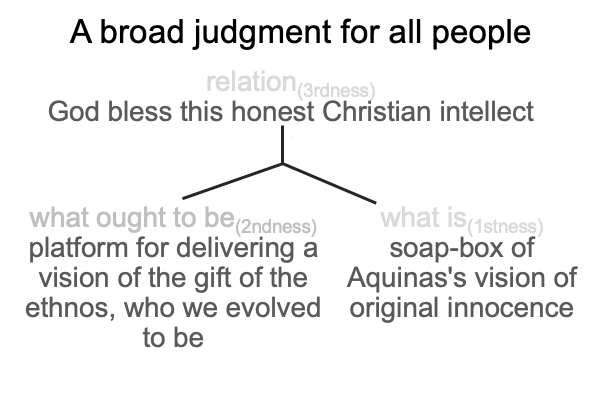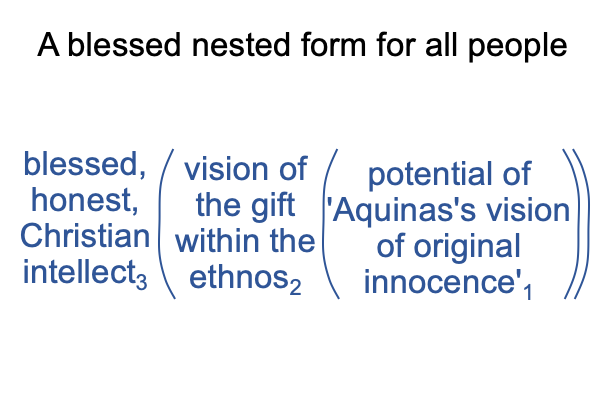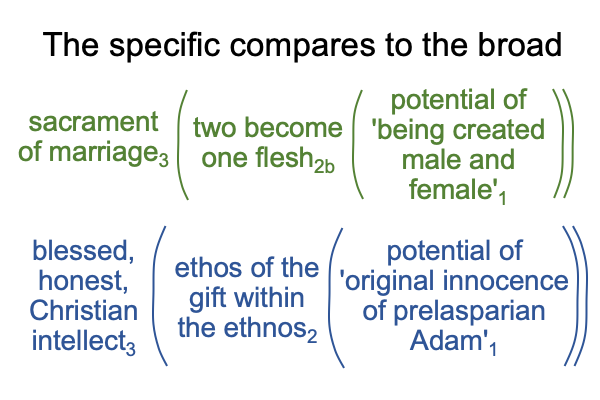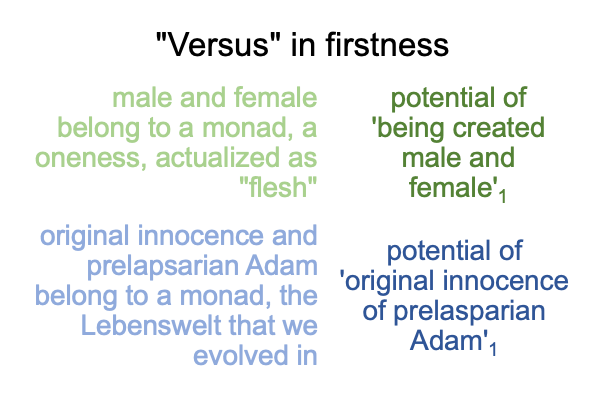Looking at Tomasz Duma’s Article (2023) “The Specificity of Secundum Dici Relations…” (Part 10 of 14)
0092 Then, there is the distincdtion between implicit and explicit abstraction.
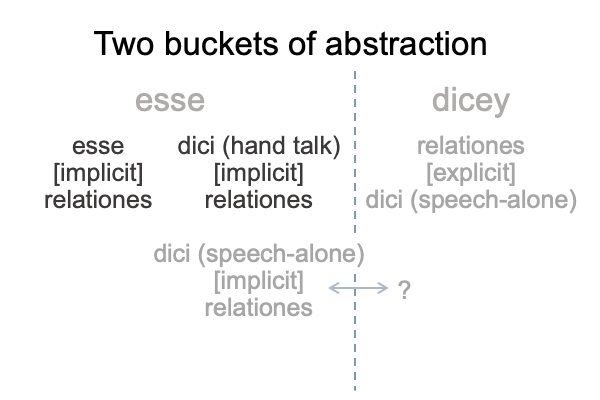
0093 This figure intimates the difficulties faced by 20th century commentators, writing long after 13th century Aquinas. The dyadicity of relationes secundum X engages Peirce’s category of secondness, even though none of the commentators knows this. Plus, Aquinas’s discussion of relatives, along with similar terms, leads to the discovery of the nature of triadic relations, such as signs and mediations, in the 16th century.
0094 Georg W. Volk captures one facet of the conundrum. Relationes secundum dici signify the relation itself as well as what is related by the relation. Does this apply to the distinction between categorical (the referent for each hand-talk word-gesture) and transcendental (the referent for an entire grammatically correct counter-intuitive hand-talk statement)? Or does this apply to two ens reale, the relation (which does not seem like ens reale, because it consists of empty slots in a purely relational structure) and its contents (which seem to be mind-independent, especially with technical terms like “cushion” and “job”).
Relationes secundum dici (speech-alone talk) may be particularly dicey, because of juxtapositions, such as “cushy job”, a term (going into the slot for form) that accords to certain relations (going into the slot for matter).
And, that is no accident.
Or is it?
0095 Krapiec starts with relationes secundum dici as an accidental being that is subordinate to substantial being, constructed as a relation or one of its components. Similarly, the missing fingertip is subordinate to my friend and “cushion” is subordinate to my boss’s job.
This accidental being is “transendental”, because it is (or may be) characteristic of any being (depending on the normal context3 and potential1).
Three problems arise when considering these transcendental accidental beings. (1) How do the elements enter into the relation? (2) Does the absolute (mind-independent) characteristic of the relational being violate the (mind-dependent) character of elements entering into relation? (3) How does a Creator God originate creation through speech acts that surely classify as relationes secundum dici?
Well, if relationes secundum dici is an accident, then can I say that this crashing success is worth raving about?
0096 Section four conveys how secundum dici relations are to be understood, according to the author, Thomasz Duma.
First, let go of the distinction between categorical and transcendental.
Second, all these relations have two termini, the relation and the elements that go into the relation. Both are expessed in the diagram of Peirce’s category of secondness, using Aristotle’s hylomorphe as an standard. Both dici and relationes are real elements. The contiguity is [secundum], translated into English as [according to]. The contiguity may be considered as “mental” or “logical”. The contiguity may be associated with implicit or explict abstraction.
Third, as soon as a relationes secundum X (X = esse or dici) is formulated as a dyad in Peirce’s realm of actuality2, it is subject to the laws of contradiction and noncontradiction. For Aristotle’s hylomorphe, matter and form are real elements associated to explicit abstraction. If the contiguity between them is labeled, [substance], then internal contradictions should be resolved.
0097 In this examination, I swerve from what Duma actually says.
Am I trying to avoid an accident?
Or, am I on my way to create one?
My course correction adds one more item to the list.
Fourth, because relationes secundum X cohere to a dyadic expression consistent with Peirce’s secondness, in order to be understood, this actuality2 requires a normal context3 and potential1.
Here is an example.
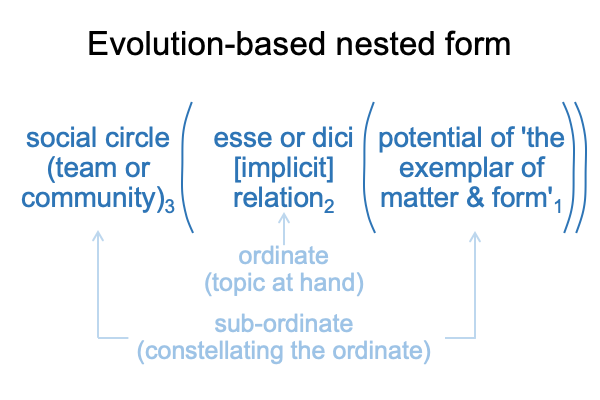
Ah, this sort of looks like Krapiec’s point about accidental being acting subordinate to substantial being.
But, now the dyadic actuality2 is ordinate and its normal context3 and potential1 are subordinate.
Which makes me wonder whether the ordinate (the actuality2) is really subordinate (to the entire nested form).
Or worse, if actuality2 is missing, does the normal context3 and potential1 act like an accident waiting to happen?
0098 No wonder the hominin brain increases in volume over evolutionary time. Imagine a hominin building an adaptive neural network2 devoted to the normal context3 and the potential1 of a subordinate being adding value to an ordinate being2 for a number of social circles3, including diverse teams3. Surely, natural selection can work on that. As each hominin grows up, other members of the band learn the range of this hominin’s aptitudes and respond accordingly, with either invitations to join a team or neglect, due to perceived lack of “talent” or “interest”.
In other words, the normal context3 of the team and the potential of the individual1 are subordinate to the ordinate, the individual joining a team2.
Joining a team correlates to reproductive success.
The irony is that no element is fully subordinate or completely ordinate in a category-based nested form.
The category-based nested form is triadic relation.
0099 May I add one more item?
Five, what does the contiguity between esse or dici and relation imply for the esse bucket?
Surely, implicit abstraction consists of the operations of adaptive neural networks, honed by evolution in the service of some team or other social circle. Implicit abstraction comes “naturally”, so to speak.
Explicit abstraction is the outlier. It is not necessarily “naturally” easy unless it somehow coheres with the mental and logical processes of an innate implicit way of thinking.
For example, why do humans learn to read so easily. Of course, some kids (and adults) have more difficulty than others, but once literate, the human mind effortlessly performs an implicit abstraction between a set of written words and its corresponding meaning, presence and message?
The answer is that so-called, “decoding”, of spoken and written words on the content-level consists of the same implicit abstractions involved in hand talk. Dici corresponds to parole. Relationes corresponds to langue.
Thus, the definition of “language”, formulated by Ferdinand de Saussure early in the 20th century, looks very much like a style of relationes secundum dici.
0100 Implicit and explicit abstraction (as well as the terms “categorical” and “transcendental”) appear to associate to the contiguity between dici and relationes, that is [secundum]. “Secundum” is often translated as “according to” or “accordance”. Secundum is not a real element. Secundum is a contiguity between two real elements. It cannot be reduced to something comparable to matter or form.

